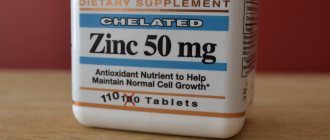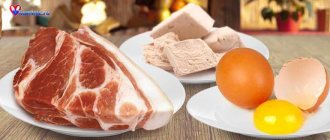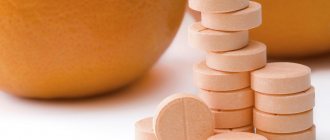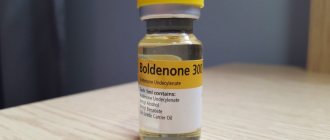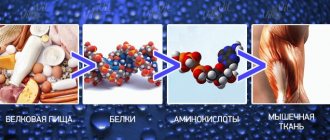Curcumin is a well-researched, widely known and versatile dietary supplement. However, most of the beneficial properties attributed to it do not have serious research. This article can help you understand when curcumin is likely to be effective and when there is not enough evidence to start using curcumin.
The article is based on the findings of 124 scientific studies
The article quotes authors such as:
- Department of Pharmacy, Linyi People's Hospital Affiliated with Shandong University, China
- Department of Biochemistry and Molecular Biology, Louisiana State University Health Sciences Center, USA
- University of Brussels and Liège University Hospital, Belgium
Please note that the numbers in parentheses (1, 2, 3, etc.) are clickable links to peer-reviewed scientific studies. You can follow these links and read the original source of information for the article.
Curcumin and its composition
Curcumin is a coloring enzyme that is found in turmeric and gives it such a beautiful rich yellow-orange hue. Curcumin is a polyphenol, a component responsible for preserving human youth and health. It contains many useful vitamins that have a beneficial effect on human health.
Curcumin is obtained from turmeric root in a special way - extraction. As a result, curcumin is a natural dye that can also be added to food, giving it not only color and taste, but also benefits the body.
Benefits of curcumin for the body
Curcumin has many beneficial properties, and here are just some of them:
- acts as an anti-inflammatory agent;
- as an antioxidant;
- as antimutagenic;
- as an antioxidant;
- minimizes stress;
- prevents the formation of cancer cells;
- fights neoplasms;
- prevents the development of dementia or Alzheimer's disease;
- suppresses diabetes;
- lowers cholesterol;
- suppresses the development of atherosclerosis;
- protects body cells;
- improves the functioning of the cardiovascular system;
- lowers blood pressure;
- increases immunity;
- fights germs and viruses;
- removes toxins, heavy metals, alkaloids;
- cleanses the blood and lymphatic system;
- fights inflammatory processes;
- restores liver and lung cells;
- restores skin cells;
- has a beneficial effect on the digestive system;
- restores joints.
Few people take curcumin in its pure form; it can often be found in spices, seasonings or dietary supplements. Dietary supplements are dietary supplements that help a person gain the required amount of vitamins, minerals and nutrients if they do not get their daily requirement from regular food.
Few people know what dietary supplements are and believe that they only cause harm, because the word “supplement” does not inspire confidence in people. However, this is absolutely not true. Curcumin can be purchased in ampoules or tablets from any website that provides such services. Or you can buy it at the market or in stores with spices and additives - it will be easier and cheaper.
We recommend reading: Is red meat good or bad for your health?
Curcumin in sports
Some properties of curcumin are beneficial for sports, for this reason sports supplements are created based on it.
For muscle recovery
Curcumin accelerates the process of muscle regeneration. The effect is achieved due to the effect of curcumin on cytokines. These substances take an active part in all inflammatory processes. The cytokine interleukin-6 stimulates muscle growth, and the cytokine TNF prevents this process. Curcumin enhances the effect of interleukin-6 and suppresses TNF, due to which the process of muscle tissue recovery is accelerated.
Promotes insulin release
Insulin is one of the most important catabolic hormones. Curcumin not only helps maintain normal insulin levels, but also improves insulin resistance. In one study, people who drank 1.5 g of curcumin every day for six months had decreased vascular stiffness, increased cell sensitivity to insulin, and decreased triglyceride and uric acid levels. In addition, the volume of visceral and total body fat decreased. (see benefits for diabetics)
Fight Lactic Acid and Inflammation
Lactic acid is a byproduct released in muscles during vigorous physical activity. It is this that causes muscle pain in the first 12 hours after training. Curcumin acts as a powerful antioxidant, reducing the intensity of oxidative stress and inflammatory reactions, preventing them from damaging cells, and prevents dangerous transformations of lipids, superoxides and radicals. (see antioxidant properties of curcumin)
Promotes weight loss
Curcumin is also useful for weight loss, as it forces the body to absorb its own fat reserves, preventing cells from capturing excess energy from food. It reduces the body's resistance to insulin, allowing cells to absorb sufficient nutrients and process them properly. As a result, the person loses weight. [25]
Thanks to curcumin, people with obesity and metabolic syndrome can not only improve their health, get rid of extra pounds, but also save their lives.
What are the benefits of curcumin for women?
- Useful for weight loss, as it quickly removes toxins, accelerates metabolism, and removes excess water.
- It protects the cardiovascular and nervous system, helps get rid of stress, depression and nervous breakdowns.
- Rejuvenates both the body and the skin as a whole. Girls and women felt better and looked younger after regular use of this spice.
- Has a beneficial effect on women's health.
Harm of curcumin and side effects
You have already learned about the benefits of curcumin for human health, but does this supplement cause any harm or is it just a myth? Let's figure it out. In fact, this supplement has no so-called side effects. It can only cause harm if a person neglects contraindications. Even an excessive dose of this supplement at one time will not cause harm to a healthy person.
But there are contraindications, and it is better to listen to them if you plan to introduce curcumin into your diet.
Who needs to reduce their intake of the supplement or eliminate it from their diet:
- people with high acidity in the stomach;
- people with pancreatitis;
- those suffering from diabetes mellitus (type 1);
- suffering from gastritis, ulcers;
- with a very fast metabolism.
Which type is better?
The worst type of curcusin is turmeric. It is not harmful to health, but curcumin must be taken in combination with some substance or modified in some way to enhance its effects. The most studied form of curcumin is Meriva, a proprietary composition of curcumin and phosphatidylcholine, a chemical that helps curcumin penetrate tissue.
Curcumin can also be taken with piperine (black pepper extract), which increases the absorption of the substance by up to 2000% by inhibiting the metabolic process that interferes with the absorption of the molecule.
How to choose curcumin and how to take it
The discussion about how to choose the right spice has already been discussed above. You can take a dietary supplement with curcumin, or you can buy the spice in its pure form at any market or store. Choosing the right one and the second is not so difficult. In the first case, if you buy dietary supplements, then look at the composition and percentage of curcumin content in one capsule or tablet.
The normal dose per day is 8-12 mg of curcumin. This way you can calculate your daily requirement and, judging by the number of tablets and the curcumin contained there, take it every day. As for “pure” spices, things are a little different. The dose per day does not change, but here you must take care of how exactly to use the supplement.
Since curcumin is only partially absorbed, it is recommended to use it in combination with oils, such as olive oil. The second option is to take a supplement with piperine, a black pepper alkaloid.
Dietary supplements with curcumin
Dosages
The following doses of curcumin were used in human clinical studies:
- Osteoarthritis : Turmeric extract 500 mg orally 2-4 times daily for 1-3 months (the following products have been used and may be important to the outcome for bioavailability reasons: Turmacin by Natural Remedies Pvt.Ltd., Meriva by Indena and CuraMed by EuroPharma USA)
- Allergic rhinitis (hay fever): curcumin 500 mg daily for 2 months (Organika Health Products)
- Crohn's disease : curcumin 1.08 g daily for one month, then 1.44 g daily for the second month
- Prevention of type 2 diabetes in people with prediabetes: curcumin 750 mg twice daily for 9 months
- Depression : curcumin 500 mg twice daily for 6-8 weeks (alone or as an adjunct to the antidepressant fluoxetine)
- Non-alcoholic fatty liver disease ( NAFLD ): 70 mg curcumin daily for 8 weeks (curcumin dose in 500 mg dispersion)
- Itchy skin : turmeric 500 mg orally 3 times daily for 8 weeks, or turmeric extract (Sami Labs LTD C3 complex) standardized to 1 g curcumin along with black pepper/long pepper extract (bioperine) daily for 4 weeks.
Reviews about curcumin: health benefits and harms
Few people can listen to an opinion unless it is supported by facts. That is why we have collected a number of reviews about the curcumin supplement and recommend that you read them to find out the honest opinion of girls and women who can share their experience of eating and using this spice. Is curcumin harmful or beneficial to health? Find out in the reviews!
Vitalina, 28 years old: Our body always needs thorough cleansing. It tends to accumulate harmful toxins and impurities, and it is impossible to remove them naturally. It is for this reason that every month doctors and nutritionists recommend spending at least one day of cleansing the body. I tried many methods, the harshest and strangest, for example the method with lemon juice, but I realized in time that I did not want to lose my internal organs, and began to look for simpler methods.
We recommend reading: How to eat sprouted wheat, benefits and harm
Since cleansing the body during the day involves a kind of fasting, I found another, more neutral way that does not harm our health. I drink a teaspoon of turmeric every day for a week.
Just dilute a spoon with warm water, drink quickly and then rinse your mouth (or better yet, brush your teeth), because turmeric tints the entire oral cavity. And that’s all, during the week you can safely eat whatever you want, of course, in moderation and approach the cleansing week sensibly (no fast food and sweets at night, otherwise what’s the point). What can I note as a plus - in addition to the removal of toxins, waste and feeling great, literally within a few days after starting, I notice how my nails and hair are stronger, how easy it is to eat and how fresh I look in the mirror. Definitely a useful thing, I didn’t notice any harm.
Lyubov, 45 years old: If you don’t know how to put your skin in order, make it fresher, younger and more beautiful, turmeric is your option. This is truly a miracle product that has an incredible effect on both the skin and the body as a whole. Like any woman, wrinkles began to appear, and along with them, swelling and bruising under my eyes began to look even more noticeable. I bought myself some facial care products and tried to disguise the signs of aging, but it didn’t work. But then I met my old friend, whom I had not seen for about two months.
Seeing her face, I was very surprised - she was 5 years older than me, but at the same time she looked younger than me. Of course, I complimented her and asked how she achieved such an effect (I immediately thought that she had plastic surgery or something similar). She, embarrassed, said that in fact the secret was very simple, and no plastic surgery was required. She told me about the benefits of turmeric, about the fact that it not only has a good effect on the condition of the skin, hair and nails, but also cleanses the body, and acts as a preventative against all diseases (even cancer).
I bought the spice in powder at the market and began taking it according to its recipe - a teaspoon in the morning, diluted with boiling water and black pepper. To be honest, the effect appeared instantly. Just a couple of days, and I felt lightness in my body, and a month later my face looked completely different - it was toned, shining with health and beauty.
We recommend reading: Lemon essential oil - medicinal properties, application, benefits, harm
Olga, 37 years old: I learned that turmeric helps remove toxins from the body and is also very effective as a preventative against cancer. Curcumin also accelerates blood very well and is good for joints, and for me this is very important. At first I bought it in liquid form on iHerb, but the order always took a very long time, so I decided to buy it in powder form on the market. I use it every day, diluting one teaspoon with boiling water, adding ground black pepper and sometimes honey. You can also feed it to children with honey; mine, for example, don’t even have time to understand what I put in their mouth.
I once bought it at the market and heard from one woman that it was all a waste of money and that the spice was harmful, they say that was the case with her. To refute this information, I turned to a doctor who told me about the side effects and harm, but from his words this can only be achieved if you have an advanced condition with your heart, kidneys, stomach, or have diabetes.
And then! He said that turmeric can cure diabetes, but I don’t remember what type (like 1). But that's not the point. A very useful supplement, both as a prevention of serious diseases and as a common cold. By taking it every day, you not only become younger, more beautiful and look 100%, but your body also feels as good as possible. I recommend to everyone!
What is turmeric
The spice turmeric, popular all over the world, is nothing more than a product of processing the roots of a herbaceous plant belonging to the Ginger family. This culture grows in the southeast of India, China, Peru, Indonesia, and the Philippine archipelago. These regions have the most favorable climate for turmeric, which is another name for a monocotyledonous plant whose stems and roots contain the dye curcumin. Therefore, even in ancient times, grass was highly valued precisely for this quality. But, in addition to the natural persistent dye, today essential oils necessary for the production of medicines, perfumes, and cosmetics are obtained from the plant on an industrial scale.
Given the huge demand for natural raw materials, turmeric is currently grown over large areas in compliance with all agrotechnical standards. An adult plant reaches two meters in height, and when it blooms, amazingly beautiful pink inflorescences appear on it.
To obtain the spice, the roots of the plant are first dried and then ground into powder. But, like many other plants, turmeric has several varieties.
Types of turmeric
In the minds of most people, turmeric is a spice with a bright saffron hue. But in nature there is also a white variety of the plant, or ceodaria. In general, over 40 species of this crop are known, but only four are widely used:
- Homemade or long turmeric. This type of plant, better known as turmeric, is a favorite spice in the East. Any national cuisine of Central Asian countries includes dishes using this seasoning.
- Round turmeric is used to produce starch.
- Ceodaria (citvar root) are small pieces that have a specific bitter taste. Similar raw materials are used in the production of liqueurs.
- Turmeric is the most popular spice and is widely used for culinary purposes.
How to distinguish real turmeric from fake
Unfortunately, increased demand for a certain type of product is often used by unscrupulous sellers as a reason for personal enrichment. Therefore, buying real turmeric today is not so easy, because often experienced manipulators pass off low-grade fakes as a high-quality seasoning. To avoid becoming a victim of deception, when purchasing, you should carry out the following test to determine the authenticity of the product: throw a pinch of turmeric powder into a glass or any other container with water. If the powder floats to the surface after thorough mixing, it is a fake. Real turmeric will dissolve quickly in water.
What is the difference between curry and turmeric?
Not all consumers are well aware of the characteristics of a particular spice. Therefore, when choosing products in this category, knowledge of the distinctive characteristics of one type of spice from another is often required. Most often, buyers confuse turmeric with curry, although these are two completely different products. Their main differences:
- Curry is a mix of various spices. Manufacturers from different countries use this method to create authentic spice mixtures. The composition may contain up to a dozen or more ingredients, but it always includes turmeric, curry leaves, and coriander.
- Turmeric, unlike curry, is a monospice. The product is often called saffron for its specific shade.
Let's summarize the benefits and harms of curcumin
Nutritional supplements, vitamins and minerals are a very important component in every person’s diet. Unfortunately, we do not get even half of the beneficial elements necessary for the body from food, thereby only causing harm to ourselves. However, there is a way to get yourself and your body in order by simply including curcumin in your diet. This product will help get rid of toxins and waste, will be a good preventive supplement against many diseases and will help make your face more toned, healthy and beautiful.
Source
More articles from the “Spices and Herbs” section
Health benefits and harms of basil herb, application
Composition of Worcestershire sauce, what to replace it with, homemade recipe
Composition of curcumin, health benefits and harms, how to take
Star anise - what is it, beneficial properties and contraindications
Cardamom: health benefits and harms
Use of turmeric in cooking
The main purpose of the spice when it comes to preparing gourmet dishes is to give food a pleasant aroma and bitter taste. The seasoning is used in ground form, as well as in spicy mixtures such as curry. Moreover, the scope of application of the spice is not limited to first and second courses alone, as it is added to desserts, alcoholic drinks and cocktails.
What dishes are turmeric added to?
Here is a list of some dishes whose taste characteristics will be significantly improved by the presence of turmeric:
- kefir smoothie with vegetables and apple;
- a delicate egg omelet sprinkled with gold powder on top;
- tuna paste;
- homemade sauces and vegetable salads;
- steamed vegetables;
- popular side dishes include buckwheat and brown rice.
In principle, if health allows and there are no serious contraindications, turmeric in reasonable quantities can be included daily in the diet.
What can you replace turmeric with?
Curry is considered the best substitute for turmeric, since the spice is one of the main components of this spicy mixture. In addition, the culture’s belonging to the Zingiberaceae family allows it to be replaced with ground ginger or parts of the root of this plant. You can also add cumin in the form of powder and seeds to your dishes instead of turmeric.
We recommend reading:
use of ground red pepper in cooking
Read
